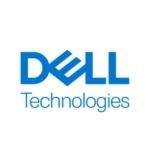What is our primary use case?
I've used this mostly for lab testing with vSphere, where a SAN was not available. In that case, a vSAN was the best product for testing.
We didn't want to have to purchase a whole load of new hardware just to complete some testing for ESXi/vCenter/vSphere, et cetera. We had a fairly large server in terms of computing (CPU, RAM) and storage that wasn't being used, so we decided to use this to host nested ESXi hosts.
We didn't want to purchase a SAN to complete the testing works, so we could deploy a Windows VM, pass the storage through and use StarWinds vSAN software instead.
How has it helped my organization?
It has allowed us to save a lot of time and money by letting us create a vSAN within a Windows VM on the environment it controls.
There are 5 ESXi servers (all virtual, nested inside the host ESXi server, so six in total). We then have a single Windows VM deployed with storage passed through directly to it. This was then set up very quickly with some PowerShell scripts. This immediately made the storage available over ISCSI to ESXi and then allowed us to complete testing of failovers and DR, et cetera, without impacting anything live and also keeping costs down.
What is most valuable?
The ability to deploy this software in full for free is great. The fact that StarWind provides this product with pretty much full functionality for free if you're willing to invest your time into working through PowerShell is very helpful. You get a lot out of it. You can also make it highly available, again, all for free!
The fact you can use the deploy to the same host it will also be managing is excellent, and also, the update process for the software is nice and easy. It's just next, next, next. I've had no issues. It also seems to not suffer from any obvious performance issues on the Windows VM. The resources I've given to it are low in terms of computing and it plods along without issue.
What needs improvement?
It would be good to have a little more access to control certain aspects within the UI. However, when you're using it for free and have the full functionality of the product available to you with scripts and other means, you can't complain.
Right now, I don't think there is anything I would think to add for my use cases. It's mostly used in a lab environment, and it does the job for us perfectly. If I was to use it in full production, I would certainly look to purchase it rather than use the free one, mostly for the simplicity of using the UI for lots of tasks.
Buyer's Guide
StarWind Virtual SAN
December 2025
Learn what your peers think about StarWind Virtual SAN. Get advice and tips from experienced pros sharing their opinions. Updated: December 2025.
879,477 professionals have used our research since 2012.
For how long have I used the solution?
I've used the solution for one to two years.
What do I think about the stability of the solution?
The stability is excellent so far. We've not had any issues and I've been using it for a couple of years.
What do I think about the scalability of the solution?
So far, scalability is excellent for the paid version.
How are customer service and support?
I've not needed to speak to them for any support. That said, I've spoken to a customer service rep, and they are very nice.
How would you rate customer service and support?
Which solution did I use previously and why did I switch?
I did not previously use a different solution. I was looking for some vSAN software for testing, and this fit the bill immediately.
How was the initial setup?
The installation is very easy. It's just a typical next, next style. The configuration of the product afterward was a little more complex, however, StarWind provides you the tools, even for free, for setting it up (PowerShell scripts).
What about the implementation team?
I implemented the product personally, in-house.
What was our ROI?
I'm using a free edition at the moment. ROI does not apply.
What's my experience with pricing, setup cost, and licensing?
I would start out by testing the product in the free edition. You get full functionality, and you can see how it will perform in your environment. If you're happy with it overall and want to use it in production, I would certainly pay for it for the UI aspects and the full support as well.
Which other solutions did I evaluate?
I tried to use things like FreeNAS/TrueNAS. However, it just wasn't quite right for my needs, whereas StarWinds vSAN worked as expected.
Which deployment model are you using for this solution?
On-premises
Disclosure: My company does not have a business relationship with this vendor other than being a customer.















